Fashion Over The Decades reveals a captivating evolution of styles, trends, and cultural shifts, and at mens-fashion.net, we’re dedicated to bringing you the most comprehensive insights into this ever-changing landscape. From the classic elegance of the early 20th century to the cutting-edge designs of today, understanding the history of fashion is essential for anyone looking to elevate their personal style. Discover how iconic pieces and cultural movements have shaped the way we dress and express ourselves, and find inspiration to create a timeless and impactful wardrobe with essential style tips, sartorial advice, and fashion evolution insights.
1. Decoding the 1900s: The Dawn of a New Silhouette
The 1900s witnessed the birth of modern fashion, marked by a shift from restrictive Victorian styles to more liberated silhouettes. The predominant trend was the S-shape silhouette, which accentuated the bust and hips, creating a distinctive curve. However, as the decade progressed, a growing desire for practicality and comfort led to the adoption of more natural forms.
Day dresses in the 1900s were characterized by their floor-length designs and long sleeves, providing full coverage. Evening dresses, while more revealing with low necklines and shorter sleeves, still maintained a similar silhouette. The emergence of sports like golf, tennis, cycling, and motoring significantly impacted fashion, inspiring unique clothing styles tailored to these activities.
1.1. Key Elements of 1900s Fashion
- S-Shape Silhouette: Emphasized the bust and hips.
- Full Coverage: Day dresses with long sleeves and floor-length designs.
- Sportswear Influence: Inspired by emerging sports like golf and tennis.
- Elegant Evening Gowns: Low décolletage and short sleeves paired with long gloves.
1.2. Cultural Influences and Fashion Evolution
The early 1900s marked a transition from rigid Victorian fashion to more practical and comfortable styles. This evolution was driven by changing social norms, the rise of sports, and a growing desire for freedom in dress.
According to research from the Fashion Institute of Technology (FIT), the S-shape silhouette was a defining characteristic of the Edwardian era, reflecting the opulence and elegance of the time.
2. Exploring the 1910s: From Corsets to Utilitarian Clothing
The 1910s brought a revolutionary shift in fashion, moving away from corsets and restrictive S-shape silhouettes toward more natural forms. Designers such as Paul Poiret, Lucile (Lady Duff Gordon), Georges Doeuillet, and Jacques Doucet played a pivotal role in this transformation. They championed less restrictive clothing, designing pieces that celebrated the female form’s natural contours. This era saw the revival of empire dresses, reminiscent of the early 19th century, characterized by their high waistlines and flowing skirts.
The rise of Orientalism, spurred by the Ballets Russes’ performance of Schéhérazade in Paris in 1910, significantly influenced fashion. Paul Poiret introduced “harem” pantaloons and The Fancy Dress costume in 1911, reflecting this exotic influence. The same year, he launched the infamous “hobble skirt,” which, despite its initial popularity, proved impractical due to its restrictive design.
The outbreak of World War I further accelerated the need for practicality in clothing. Women entered the workforce in munitions factories, necessitating the adoption of utilitarian clothing that prioritized functionality and comfort.
2.1. Key Trends of the 1910s
- Empire Dresses: High-waisted designs with flowing skirts.
- Orientalism Influence: Exotic designs inspired by the Ballets Russes.
- Utilitarian Clothing: Practical garments for women in the workforce.
- “Hobble Skirt”: A restrictive skirt that gained initial popularity but was ultimately impractical.
2.2. The Impact of World War I on Fashion
World War I had a profound impact on fashion, driving the need for practicality and functionality. Women’s roles in the workforce expanded, leading to the adoption of utilitarian clothing that prioritized comfort and efficiency. According to research from the Fashion Institute of Technology (FIT), the war years saw a significant shift in fashion, with practicality becoming a primary consideration.
3. Roaring Twenties: The Age of Flappers and Freedom
The 1920s, often celebrated as the age of glitz, jazz, and glamour, were also marked by simplicity and practicality. Following the end of World War I, women sought more minimalistic and comfortable clothing, leading to the abandonment of corsets, crinolines, bustle skirts, and other restrictive garments of the Victorian era.
The defining fashion trend of the decade was the “flapper look,” also known as “la garçonne,” characterized by a boyish silhouette. Flapper dresses featured a dropped waist, hemlines that rose to just below the knee, and simple construction. This androgynous style introduced a new notion of femininity and was popularized by Coco Chanel.
Jeanne Lanvin’s “Robe de style” offered a more romantic alternative, featuring a fuller skirt and a more traditional feminine silhouette. Sportswear gained further acceptance among women, with designers like Elsa Schiaparelli, Coco Chanel, and Jean Patou revolutionizing women’s athletic attire.
The styles of the 1920s contributed to the democratization of fashion, making fashionable looks accessible to a wider range of women. Simpler clothes, made with less expensive materials and easy to wear, allowed more women to dress well for various occasions.
3.1. Defining Trends of the 1920s
- Flapper Look: Boyish silhouette with dropped waist and raised hemlines.
- “Robe de style”: A more romantic and feminine dress style.
- Sportswear Revolution: Designers like Chanel and Schiaparelli transforming athletic attire.
- Democratization of Fashion: Simpler, more affordable clothing for women.
3.2. Coco Chanel’s Influence on 1920s Fashion
Coco Chanel was a pivotal figure in the 1920s, popularizing the flapper look and championing minimalistic, comfortable clothing. Her designs redefined feminine style and contributed to the democratization of fashion, making fashionable looks accessible to a wider audience.
According to research from the Fashion Institute of Technology (FIT), Chanel’s influence on 1920s fashion was profound, as she challenged traditional notions of femininity and introduced a new era of simplicity and elegance.
4. 1930s Fashion: Elegance and Hollywood Glamour
The 1930s saw a soft transition from the boyish styles of the previous decade to a more feminine silhouette. One of the most significant trends was the bias cut, a technique that allowed fabric to drape elegantly over the body, creating a flowing and flattering effect.
Cinema, particularly Hollywood, had a major impact on fashion during this era. Movie stars such as Greta Garbo, Marlene Dietrich, and Bette Davis became early style icons, influencing fashion trends and inspiring women worldwide.
4.1. Key Fashion Trends of the 1930s
- Bias Cut: A technique that allowed fabric to drape elegantly over the body.
- Hollywood Influence: Movie stars becoming style icons.
- Feminine Silhouettes: Transition from boyish styles to more curves.
- Elegant and Flowing Dresses: Accentuated femininity and grace.
4.2. The Influence of Hollywood on Fashion
Hollywood’s influence on fashion during the 1930s was undeniable. Movie stars became style icons, and their on-screen wardrobes inspired women worldwide. According to research from the Fashion Institute of Technology (FIT), the glamour and elegance of Hollywood cinema played a significant role in shaping fashion trends during this decade.
5. The 1940s: Utility and the “New Look” Revolution
The outbreak of World War II led to a scarcity of materials and rationing, causing fashion to become practical. Uniforms were common for men and women serving in the war, while utility clothing became the norm for civilians. This style featured padded shoulders, a cinched waist, and hemlines that fell below the knee.
A notable innovation during this period was the invention of the bikini in 1946 by Jacques Heim and Louis Reard. Heim named his creation “Atome,” suggesting it was as small as an atom, while Reard was inspired by the Bikini Atoll, where the United States conducted atomic bomb tests. Both designers saw the bikini as a metaphor for the explosion it would create in fashion and society.
Following the war, Christian Dior introduced his iconic “New Look” in 1947, a groundbreaking design characterized by a cinched waist and a full, voluminous skirt. The fashion world had never seen such elaborate designs, which used an abundance of fabric to celebrate women’s beauty and femininity.
5.1. Key Trends of the 1940s
- Utility Clothing: Practical garments due to wartime rationing.
- The Bikini: A revolutionary swimwear innovation.
- Dior’s “New Look”: Cinched waist and full, voluminous skirt.
- Padded Shoulders and Cinched Waists: Defining characteristics of wartime fashion.
5.2. Christian Dior and the “New Look”
Christian Dior’s “New Look” was a transformative moment in fashion history, marking a departure from the austerity of wartime styles. His designs celebrated femininity and luxury, using an abundance of fabric to create elegant and extravagant silhouettes. According to research from the Fashion Institute of Technology (FIT), Dior’s “New Look” revitalized the fashion industry and set the tone for the post-war era.
6. The 1950s: Elegance and Diverse Silhouettes
After years of wartime austerity, the 1950s were marked by a desire for elegance and style. Feminine silhouettes, cinched waists, and full dresses and skirts defined the era. Dior’s “New Look” remained popular, but the decade also saw the emergence of straighter, slimmer silhouettes, such as Cristobal Balenciaga’s “Sack Dress” from 1957.
Balenciaga’s “Sack Dress” challenged conventional fashion norms with its broad shoulders and boxy shape, a stark contrast to Dior’s cinched-waist designs. While Dior relied on built-in corsetry and layered underskirts for volume, Balenciaga achieved volume through skillful manipulation of fabric.
Coco Chanel reopened her business in 1954 and reintroduced her signature slim look with boxy jackets and straight skirts, further diversifying the fashion landscape.
6.1. Key Trends of the 1950s
- Feminine Silhouettes: Cinched waists and full skirts.
- Dior’s “New Look”: Continued popularity and influence.
- Balenciaga’s “Sack Dress”: A revolutionary, boxy silhouette.
- Chanel’s Slim Look: Boxy jackets and straight skirts.
6.2. The Rivalry of Dior, Balenciaga, and Chanel
The 1950s saw Dior, Balenciaga, and Chanel emerge as leaders of Paris couture, each revolutionizing women’s fashion in distinct ways. Dior emphasized femininity and luxury with his “New Look,” Balenciaga challenged conventional norms with his innovative silhouettes, and Chanel reintroduced her timeless slim look, creating a diverse and dynamic fashion landscape.
According to research from the Fashion Institute of Technology (FIT), the rivalry between these three designers shaped the fashion trends of the 1950s and influenced generations of designers to come.
7. Swinging Sixties: Youth, Music, and Revolutionary Designs
In the early 1960s, fashion continued along the lines of the 1950s, with First Lady Jacqueline Kennedy serving as a style icon. Designers like Hubert de Givenchy and Cristobal Balenciaga continued to popularize the feminine look.
The mid-1960s, known as the “Swinging Sixties,” brought a cultural phenomenon that focused on youth, music, and fashion. Designers such as Mary Quant, André Courrèges, Pierre Cardin, and Paco Rabanne understood the needs of modern women, creating clothes that were liberating, daring, and fun while remaining practical.
The miniskirt, credited to both Mary Quant and André Courrèges, was a revolutionary design that epitomized the spirit of the decade. Mary Quant also contributed to women’s sexual liberation with trousers and hotpants, while Yves Saint Laurent invented the first tuxedo for women. The era’s most high-profile model was Twiggy.
New innovative materials such as acrylics, polyesters, PVC, vinyl, lycra, and metallics were introduced, and bright colors began replacing the sober palette of previous decades. The era embraced futuristic fashion, with designers drawing inspiration from space travel and technology. Pierre Cardin drew inspiration from Pop Art and Op Art, experimenting with motifs, geometry, and colors.
7.1. Defining Trends of the 1960s
- Miniskirt: A revolutionary design that epitomized the decade’s spirit.
- Futuristic Fashion: Inspired by space travel and technology.
- Innovative Materials: Introduction of acrylics, polyesters, and PVC.
- Bright Colors: Replacing the sober palette of previous decades.
7.2. The Impact of the “Swinging Sixties” on Fashion
The “Swinging Sixties” brought a cultural revolution that transformed fashion. Youth culture, music, and a desire for liberation led to innovative designs and a rejection of traditional norms. According to research from the Fashion Institute of Technology (FIT), the “Swinging Sixties” were a pivotal moment in fashion history, shaping the trends and styles that continue to influence contemporary design.
8. The 1970s: Hippie Style, Disco Glamour, and Sportswear
The 1970s saw a wide range of popular fashions. Hippie style was in vogue, particularly with prairie dresses incorporated into high fashion collections. Patchwork, crochet and knitting, embroidery, and synthetic materials characterized the decade.
Later in the decade, the hippie style gave way to the glamorous looks of “the disco era,” with designer Halston at the forefront. Some designers responded to the sexual freedom of women. For example, in 1971, Yves Saint Laurent launched a 1940s-inspired collection “Libération,” and Diane Von Furstenberg released her timeless “Wrap dress.”
Sportswear made its entry into women’s fashion, popularized by Norma Kamali with her iconic “Sleeping bag coat,” sweats, and a “Parachute” collection of dresses and jumpsuits.
8.1. Key Trends of the 1970s
- Hippie Style: Prairie dresses, patchwork, and embroidery.
- Disco Glamour: Glitzy and glamorous looks.
- Yves Saint Laurent’s “Libération”: A 1940s-inspired collection.
- Diane Von Furstenberg’s “Wrap Dress”: A timeless and versatile design.
- Sportswear: Norma Kamali’s “Sleeping bag coat” and parachute collection.
8.2. The Diversity of Styles in the 1970s
The 1970s were marked by a wide range of styles, from the bohemian hippie look to the glamorous disco era and the emergence of sportswear. This diversity reflected the decade’s cultural shifts and the growing freedom of expression in fashion.
According to research from the Fashion Institute of Technology (FIT), the 1970s were a pivotal decade in fashion history, laying the groundwork for the diverse and eclectic styles of the decades to come.
9. The 1980s: Boldness, Individuality, and Cultural Transformation
The 1980s were a decade of cultural transformation and the expression of individuality. Extravagant styles, bold colors, and accessories were essential. Neon clothes and jumpsuits were also popular. Christian Lacroix, Jean-Paul Gaultier, Versace, and Karl Lagerfeld for Chanel embraced this trend.
The increasing popularity of fitness inspired off-the-shoulder sweatshirts, sport shorts, spandex, leggings, leg warmers, and headbands. Music significantly influenced fashion: pop music (big hairstyles, glitter makeup, lots of jewelry), punk (tartan clothing, Doc Martens, leather, and fishnet), and Hip Hop (loose-fitting jeans, sneakers).
As more women entered the workforce, “power suits” with padded shoulders, bold accessories, and high heels became popular. American designers like Perry Ellis and Ralph Lauren turned to a more classic and casual style with the “preppy look.”
A new type of fashion emerged from Japan, with designers such as Comme des Garçons’ Rei Kawakubo and Yohji Yamamoto employing deconstruction, exaggerated proportions, and black as the new it color.
9.1. Defining Trends of the 1980s
- Extravagant Styles: Bold colors and accessories.
- Fitness Influence: Off-the-shoulder sweatshirts and leggings.
- Music Influence: Pop, punk, and hip hop styles.
- “Power Suits”: Padded shoulders and bold accessories.
- “Preppy Look”: Classic and casual style.
- Japanese Deconstruction: Exaggerated proportions and black as the new it color.
9.2. The Influence of Music and Fitness on 1980s Fashion
Music and fitness had a significant impact on 1980s fashion, shaping the trends and styles of the decade. Pop music inspired extravagant styles, punk influenced edgy and rebellious looks, and hip hop brought streetwear to the forefront. The fitness craze led to the popularity of workout gear as everyday wear.
According to research from the Fashion Institute of Technology (FIT), the 1980s were a dynamic and transformative decade in fashion history, reflecting the cultural shifts and diverse influences of the era.
10. The 1990s: Minimalism, Casual Style, and Subcultures
The early 1990s marked the peak of the Supermodel era. The sportswear looks of the 1980s continued, with biker shorts, leggings, and oversized sweatshirts remaining popular.
Fashion shifted toward a more casual style and minimalism. The slip dress became a major trend, and supermodels were replaced by “heroin chic” models, exemplified by Kate Moss.
The three main subcultures of the 1990s were Grunge fashion (loose-fitting jeans, flannel shirts, Doc Martens), the preppy style (oversized shirts, high-waisted jeans, plaid mini-skirts), and Punk (black leather jackets, ripped jeans, choker necklaces).
The music and film industry, including Destiny’s Child, The Spice Girls, Clueless, and The Fresh Prince of Bel-Air, influenced the popular fashion trends of the 1990s.
10.1. Defining Trends of the 1990s
- Supermodel Era: The peak of supermodel popularity.
- Sportswear: Continued popularity of biker shorts and leggings.
- Minimalism: Casual style and slip dresses.
- Grunge Fashion: Loose-fitting jeans and flannel shirts.
- Preppy Style: Oversized shirts and plaid mini-skirts.
- Punk: Black leather jackets and ripped jeans.
10.2. The Influence of Subcultures on 1990s Fashion
Subcultures played a significant role in shaping 1990s fashion, with grunge, preppy, and punk styles influencing the trends and looks of the decade. Each subculture brought its unique aesthetic and values to the fashion landscape, creating a diverse and eclectic mix of styles.
According to research from the Fashion Institute of Technology (FIT), the 1990s were a decade of individualism and self-expression, with subcultures playing a pivotal role in shaping the fashion trends of the era.
11. The 2000s: Fast Fashion, Technology, and Subcultures
Fashion at the start of the 21st century was similar to that of the late 1990s. Globalization and the rise of fast fashion made affordable runway-inspired clothes widely available. Celebrities and TV shows like The OC, One Tree Hill, and Gossip Girl were style icons.
Technology influenced fashion, with The Matrix inspiring designers like Balenciaga and Yves Saint Laurent to use black in their Fall 2001 collections. After 9/11, fashion returned to conservatism, casual clothing, and jeans, which evolved in style throughout the years. Sneakers, platform heels, and Ugg boots were also popular. The tracksuit became trendy, worn by celebrities and TV actresses.
The predominant looks of the decade were bohemian, hip-hop, streetwear, Y2K, scene, emo, and athleisurewear, each influencing fashion in different ways.
:max_bytes(150000):strip_icc()/070819-oc-style-embed-05-2000-1d1c2be65851475caa23257ac25fd8db.jpg)
11.1. Defining Trends of the 2000s
- Fast Fashion: Affordable runway-inspired clothing.
- Technology Influence: The Matrix-inspired black clothing.
- Jeans: Evolving styles and widespread popularity.
- Tracksuits: Trendy sportswear worn by celebrities.
- Bohemian Look: Vintage and handmade clothing.
- Y2K: A futuristic and tech-inspired style.
11.2. The Impact of Fast Fashion and Technology on the 2000s
Fast fashion and technology had a significant impact on 2000s fashion, making trends more accessible and influencing the styles of the decade. Fast fashion allowed consumers to quickly adopt runway-inspired looks, while technology inspired futuristic and innovative designs.
According to research from the Fashion Institute of Technology (FIT), the 2000s were a decade of rapid change and diverse influences, with fast fashion and technology playing a significant role in shaping the fashion landscape.
12. The 2010s: Athleisure, Influencers, and Maximalism
Throughout the 2010s, athleisure became a casual everyday wear. Fashion bloggers and influencers dictated trends due to the rise of social media. There was a return to maximalism from the 1980s, with bright colors and bold textures becoming popular.
Besides the trends themselves, the 2010s brought a bigger focus on sustainability issues. Consumers and companies began discussing the impact of fashion on the environment and the working conditions of factory workers.
12.1. Defining Trends of the 2010s
- Athleisure: Workout gear as casual wear.
- Influencer Impact: Bloggers dictating trends.
- Maximalism: Bright colors and bold textures.
- Sustainability Focus: Discussions about environmental and social impact.
12.2. The Role of Social Media in Shaping 2010s Fashion
Social media played a significant role in shaping 2010s fashion, with bloggers and influencers dictating trends and reaching a wider audience. Social media platforms became a key source of inspiration and information, influencing consumer choices and promoting diverse styles.
According to research from the Fashion Institute of Technology (FIT), the 2010s were a decade of digital transformation in fashion, with social media playing a central role in shaping the trends and styles of the era.
13. The 2020s: Comfort, Minimalism, and Throwbacks
The COVID-19 pandemic significantly impacted fashion, with people adopting cozy and practical clothing, and activewear becoming a trend again. Minimalism from the 1990s resurfaced, along with trends from other decades like mini dresses and skirts from the 1960s, and the Y2K trend from the 2000s.
13.1. Current Fashion Trends
- Comfort and Practicality: Cozy and functional clothing.
- Activewear: A resurgence of sportswear.
- Minimalism: A return to simple and streamlined styles.
- Throwbacks: Revivals of trends from the 1960s and 2000s.
13.2. The Impact of the Pandemic on Fashion
The COVID-19 pandemic had a profound impact on fashion, leading to a greater emphasis on comfort, practicality, and versatility. As people spent more time at home, they prioritized cozy and functional clothing, leading to the resurgence of activewear and minimalist styles.
According to research from the Fashion Institute of Technology (FIT), the pandemic has accelerated the shift towards more sustainable and mindful consumption, with consumers seeking timeless and versatile pieces that can be worn in various settings.
14. Why Is “Fashion Over The Decades” Important?
Understanding fashion over the decades is crucial for several reasons:
- Historical Context: It provides insight into cultural and societal shifts.
- Trend Awareness: It helps predict and understand current trends.
- Personal Style: It informs and enhances personal style choices.
- Creative Inspiration: It serves as a source of inspiration for designers and stylists.
- Appreciation of Craftsmanship: It highlights the evolution of techniques and materials.
15. What Are the Key Fashion Moments That Changed The Industry?
Several key moments have revolutionized the fashion industry:
- The New Look (1947): Christian Dior’s revolutionary silhouette.
- The Miniskirt (1960s): A symbol of youth and liberation.
- The Wrap Dress (1970s): Diane von Furstenberg’s versatile design.
- The Power Suit (1980s): A symbol of women’s empowerment.
- The Rise of Fast Fashion (2000s): Affordable and accessible trends.
16. How Can I Incorporate Vintage Fashion Into My Wardrobe?
Incorporating vintage fashion into your wardrobe can add unique flair:
- Start Small: Begin with accessories like scarves or jewelry.
- Focus on Key Pieces: Invest in timeless items like a vintage leather jacket.
- Mix and Match: Combine vintage pieces with modern clothing.
- Tailor to Fit: Ensure vintage items fit well for a contemporary look.
- Research and Authenticity: Learn about vintage styles to find genuine pieces.
17. What are the must-know designers for each decade?
| Decade | Designers |
|---|---|
| 1900s | Paul Poiret |
| 1910s | Lucile |
| 1920s | Coco Chanel |
| 1930s | Madeleine Vionnet |
| 1940s | Christian Dior |
| 1950s | Cristobal Balenciaga |
| 1960s | Mary Quant |
| 1970s | Yves Saint Laurent |
| 1980s | Vivienne Westwood |
| 1990s | Alexander McQueen |
| 2000s | Tom Ford |
| 2010s | Alessandro Michele |
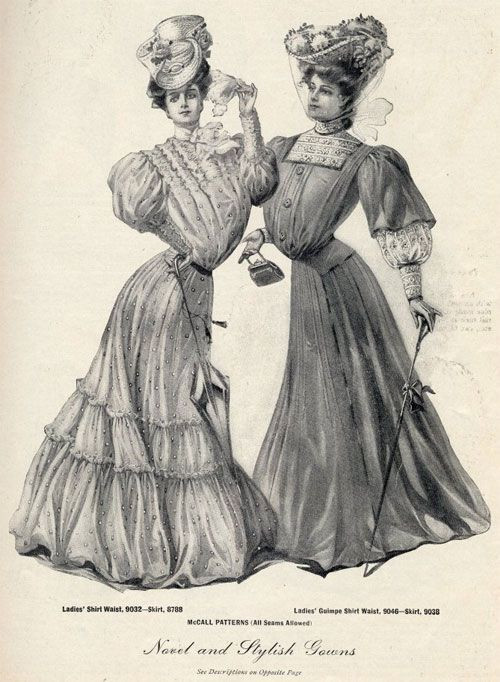

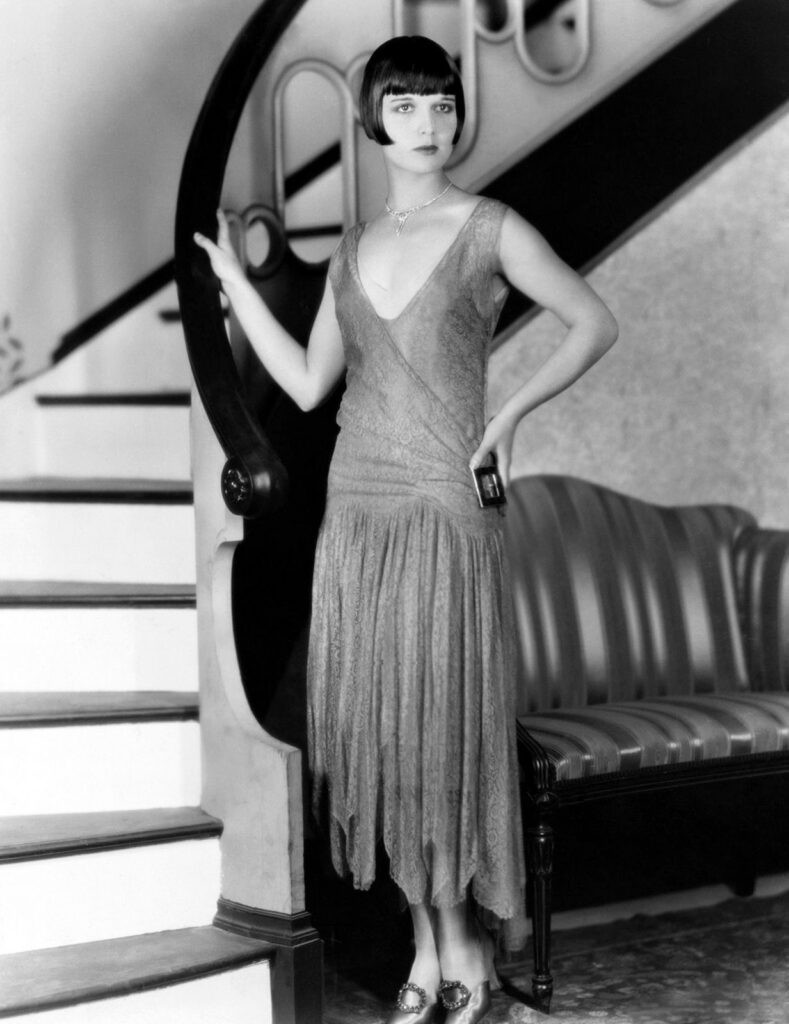
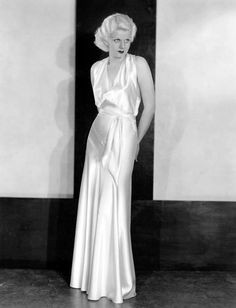


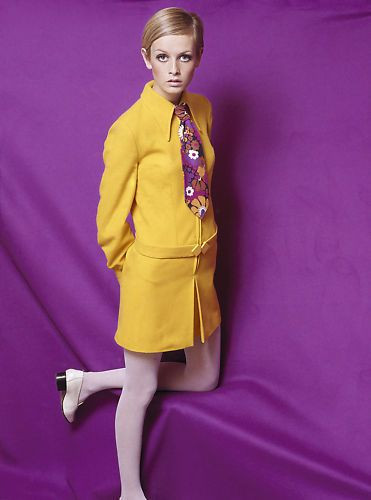

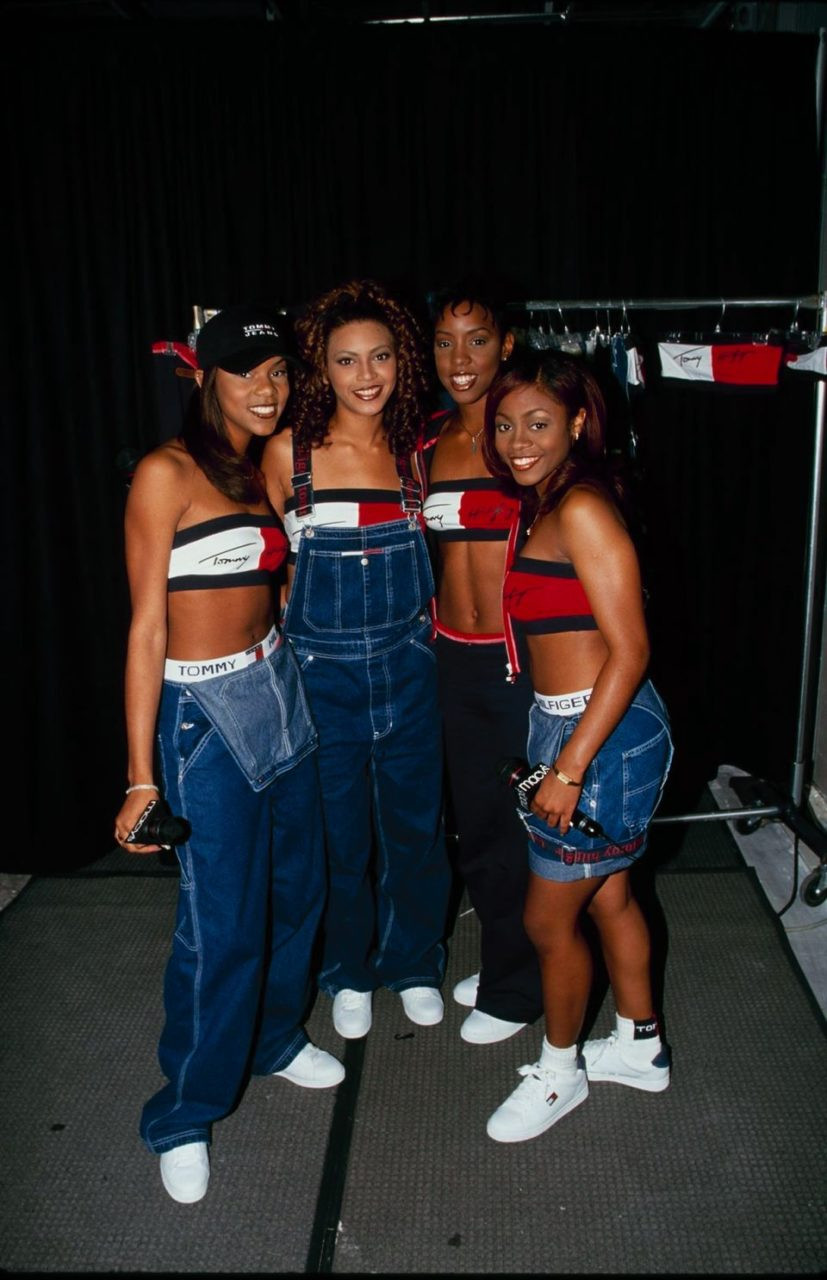
18. How do Subcultures influence Mainstream Fashion?
Subcultures often introduce unique styles that eventually influence mainstream fashion:
- Streetwear: Originating from skate and hip-hop culture.
- Gothic: Dark and romantic aesthetics influencing high fashion.
- Bohemian: Free-spirited styles inspiring casual trends.
- Punk: Rebellious and deconstructed looks in high fashion.
19. What is the Future of Fashion Considering Past Trends?
The future of fashion is likely to combine past trends with new innovations:
- Sustainability: Eco-friendly materials and practices.
- Technology: Wearable tech and personalized fashion.
- Inclusivity: Diverse representation and adaptive designs.
- Comfort: Prioritizing comfort and functionality.
- Personalization: Customized and unique styles.
20. How Can Mens-Fashion.Net Help Me Stay Updated on Fashion Trends?
Mens-fashion.net offers a wealth of resources to help you stay updated on the latest fashion trends and elevate your personal style. Our website provides:
- In-Depth Articles: Explore detailed articles on current trends, historical fashion, and styling tips.
- Expert Advice: Get insights from fashion experts and stylists.
- Trend Spotting: Stay updated with the latest runway shows and street style.
- Style Guides: Learn how to incorporate trends into your wardrobe.
- Brand Spotlights: Discover emerging and established fashion brands.
At mens-fashion.net, we understand the challenges of keeping up with ever-changing fashion trends and finding clothes that fit well, suit various occasions, and express your personal style. That’s why we’re committed to providing you with the information and inspiration you need to make confident fashion choices.
Ready to transform your style? Visit mens-fashion.net today to explore our latest articles, trend reports, and style guides. Discover the joy and confidence that comes with a well-curated wardrobe.
Address: 227 W 27th St, New York, NY 10001, United States.
Phone: +1 (212) 217-5800.
Website: mens-fashion.net.
FAQ: Fashion Over The Decades
FAQ 1: What was the defining silhouette of the 1900s?
The defining silhouette of the 1900s was the S-shape, which accentuated the bust and hips. The S-shape silhouette, achieved through corsetry, pushed the chest forward and the hips back, creating a distinctive curve that was fashionable during the Edwardian era.
FAQ 2: Who were the key designers of the 1920s?
Coco Chanel and Jeanne Lanvin were key designers of the 1920s. Coco Chanel popularized the flapper look, while Jeanne Lanvin created the romantic “Robe de style,” both significantly influencing the decade’s fashion trends.
FAQ 3: What impact did World War II have on fashion?
World War II led to practical utility clothing due to rationing and material shortages. The war necessitated functional garments, with padded shoulders and cinched waists becoming common, influencing fashion to prioritize utility over elaborate design.
FAQ 4: What was Christian Dior’s “New Look” and when did it emerge?
Christian Dior’s “New Look” emerged in 1947, featuring a cinched waist and full skirt, revolutionizing post-war fashion. The “New Look” was a departure from wartime austerity, celebrating femininity with lavish use of fabric and elegant silhouettes.
FAQ 5: How did the “Swinging Sixties” influence fashion?
The “Swinging Sixties” brought youth-focused, liberating designs with the miniskirt and innovative materials. Designers like Mary Quant and André Courrèges created daring and fun clothing that challenged traditional norms, influencing fashion’s shift towards youth culture.
FAQ 6: What characterized the hippie style of the 1970s?
The hippie style of the 1970s was characterized by prairie dresses, patchwork, embroidery, and synthetic materials. It embraced freedom and individuality, influencing fashion with its bohemian aesthetics.
FAQ 7: What were the key trends of the 1980s?
Extravagant styles, fitness-inspired wear, and music influences defined the 1980s. Bold colors, power suits, and the “preppy look” reflected the decade’s cultural transformation, with designers like Versace and Westwood shaping its style.
FAQ 8: How did subcultures influence fashion in the 1990s?
Grunge, preppy, and punk subcultures significantly influenced fashion in the 1990s. Each brought unique aesthetics, shaping trends and looks during the era.
FAQ 9: What impact did fast fashion and technology have on the 2000s?
Fast fashion made trends accessible, while technology inspired futuristic designs in the 2000s. Globalization and the rise of fast fashion democratized runway styles, and technology influenced designers to use black in their collections.
FAQ 10: How has social media shaped fashion in the 2010s and beyond?
Social media has empowered influencers, promoting diverse styles and focusing on sustainability. Bloggers and influencers dictate trends, shaping consumer choices and advocating for eco-friendly materials and ethical practices.